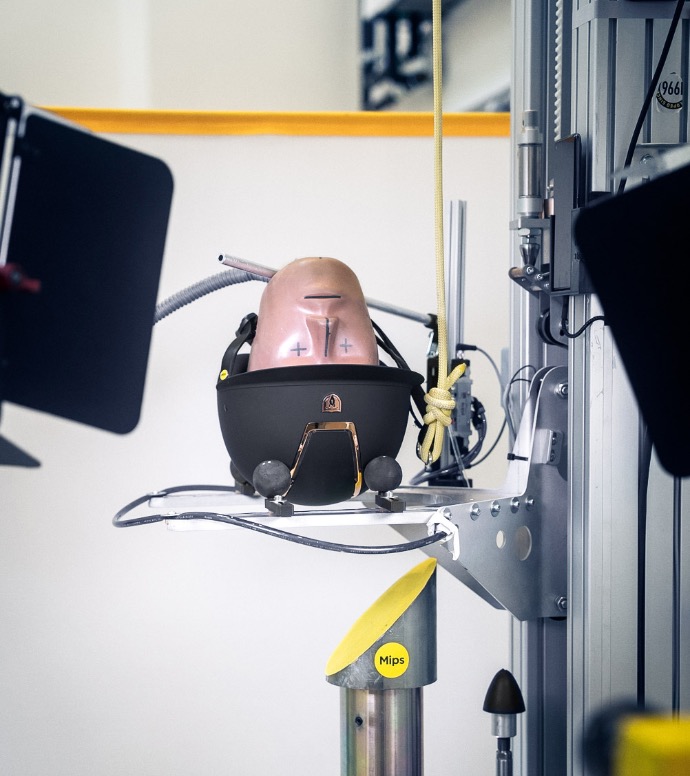Mips®
What is Mips?
We’re proud to feature Mips in two of our helmet collections: the Windsor collection and the Devon collection. But what is Mips exactly? Mips stands for Multi-Directional Impact Protection System.
The Mips safety system features a low-friction layer inside the helmet that allows multi-directional movement of 10-15mm on certain angled impacts. The impacts that occur from falling are typically angled impacts. This can cause rotational motion, a common cause for concussions and brain injuries in oblique hits to the head. A helmet equipped with Mips is intended to help manage those forces and reduce the rotational motion.
Here's how a small movement might make a big difference.
Most often when you fall while moving and hit your head, you don’t fall in a straight line, you fall at an angle. When your head hits something at an angle, it exposes your head to rotational motion, which studies have shown can be more dangerous than linear impacts.
The brain is more sensitive to rotational motion than linear motion because it has shear properties similar to water or gel. When different parts of the brain move relative to each other as a result of rotational motion, the tissues can stretch, which can cause concussions or other brain injuries.
The Mips system in your helmet works as an extra layer that moves slightly when impacted, and is designed to help reduce the amount of force from the rotational motion away from the head.
We’re often asked if the Mips system affects the comfort or weight of a helmet. Mips ensures that each model of helmet gets a layer that’s custom-designed and engineered to fit the ventilation, shape, and other features of the helmet style.
The Mips low-friction layer is designed to add minimal volume and weight. The Mips system itself weighs between 25 to 45 grams, depending on the helmet model. It is positioned within the helmet, so that you’ll hardly notice it.


Ever wondered what goes into testing a Mips helmet?
The team at Mips has shared a closer look at their test lab in Sweden, which features four test machines and state-of-the-art tools designed to mimic real-world impact scenarios.
Mips measures 6DOF (six degrees of freedom) accelerations over time. Put simply, DOF measures the way objects are able to move through space.
Because studies show that the vast majority of head impacts from bicycle, motorcycle, equestrian and other sports accidents are angled, Mips performs all helmet tests at an angle of 45 degrees, through a vertical drop to the angled impact anvil.
As a substitute for the human head, Mips uses an experimental system called the Hybrid III. Inside the head form, a set of accelerometers measures 6DOF accelerations over time. All helmets are impacted at three different points to control the Mips safety system function around all three anatomical axes (X, Y and Z). They test the same model of helmet, with and without a Mips safety system, in all available sizes.
Next, impact data is analyzed. These thorough tests ensure that each Mips equipped helmet model can be approved according to the Mips Test Method.